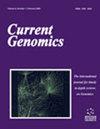Plasma Virome of HIV-infected Subjects on Suppressive Antiretroviral Therapy Reveals Association of Differentially Abundant Viruses with Distinct T-cell Phenotypes and Inflammation
IF 1.4
4区 生物学
Q4 BIOCHEMISTRY & MOLECULAR BIOLOGY
引用次数: 0
Abstract
Background:: The plasma virome represents the overall composition of viral sequences present in it. Alteration in plasma virome has been reported in treatment of immunocompromised (CD4 count <200) people with HIV (PWH). However, the effect of ART on virome composition in PWH on ART with preserved CD4 counts is poorly understood. Objective:: We aimed to assess the alterations in plasma virome in PWH on ART in comparison to HIV-negative uninfected controls and to further investigate possible associations of plasma viruses with inflammation and immune dysfunction, namely, immunosenescence and immune exhaustion. Methods:: Plasma viral DNA from PWH on ART and controls were used for sequencing on the Illumina Nextseq500 platform, followed by the identification of viral sequences using an automated pipeline, VIROMATCH. Multiplex cytokine assay was performed to measure the concentrations of various cytokines in plasma. Immunophenotyping was performed on PBMCs to identify T cell markers of immunosenescence and immune exhaustion. Results:: In our observational, cross-sectional pilot study, chronically infected PWH on ART had significantly different viral species compositions compared to controls. The plasma virome of PWH showed a significantly high relative abundance of species Human gammaherpesvirus 4, also known as Epstein-Barr virus (EBV). Moreover, EBV emerged as a significant viral taxon differentially enriched in PWH on ART, which further correlated positively with the exhaustion phenotype of T cells and significantly increased TNF-α in PWH on ART. Additionally, a significantly increased proportion of senescent T cells and IL-8 cytokine was detected in PWH on ART. Conclusion:: Altered plasma virome influenced the inflammatory response and T-cell phenotype in PWH on ART.接受抑制性抗逆转录病毒疗法的艾滋病病毒感染者的血浆病毒组显示,不同丰度的病毒与不同的 T 细胞表型和炎症有关联
背景血浆病毒组代表了血浆中病毒序列的整体组成。有报道称,在治疗免疫力低下(CD4 细胞数为 200)的艾滋病病毒感染者(PWH)时,血浆病毒组会发生改变。然而,人们对接受抗逆转录病毒疗法(ART)治疗且 CD4 细胞数保持不变的艾滋病病毒感染者病毒组组成的影响知之甚少。目的我们旨在评估与 HIV 阴性未感染对照组相比,接受抗逆转录病毒疗法的 PWH 血浆病毒组的变化,并进一步研究血浆病毒与炎症和免疫功能障碍(即免疫衰老和免疫衰竭)之间可能存在的关联。研究方法使用 Illumina Nextseq500 平台对接受抗逆转录病毒疗法的 PWH 和对照组的血浆病毒 DNA 进行测序,然后使用 VIROMATCH 自动流水线鉴定病毒序列。多重细胞因子检测用于测量血浆中各种细胞因子的浓度。对 PBMC 进行免疫分型,以确定免疫衰老和免疫衰竭的 T 细胞标记物。结果在我们的观察性横断面试点研究中,与对照组相比,接受抗逆转录病毒疗法的慢性感染 PWH 的病毒种类组成明显不同。PWH的血浆病毒组显示,人类γ疱疹病毒4(又称爱泼斯坦-巴尔病毒(EBV))的相对丰度明显较高。此外,在接受抗逆转录病毒疗法的 PWH 中,EBV 是一个重要的病毒分类群,它与接受抗逆转录病毒疗法的 PWH 的 T 细胞衰竭表型和 TNF-α 的显著增加呈正相关。此外,在接受抗逆转录病毒疗法的 PWH 中还检测到衰老 T 细胞和 IL-8 细胞因子的比例明显增加。结论血浆病毒组的改变影响了接受抗逆转录病毒疗法的 PWH 的炎症反应和 T 细胞表型。
本文章由计算机程序翻译,如有差异,请以英文原文为准。
求助全文
约1分钟内获得全文
求助全文
来源期刊

Current Genomics
生物-生化与分子生物学
CiteScore
5.20
自引率
0.00%
发文量
29
审稿时长
>0 weeks
期刊介绍:
Current Genomics is a peer-reviewed journal that provides essential reading about the latest and most important developments in genome science and related fields of research. Systems biology, systems modeling, machine learning, network inference, bioinformatics, computational biology, epigenetics, single cell genomics, extracellular vesicles, quantitative biology, and synthetic biology for the study of evolution, development, maintenance, aging and that of human health, human diseases, clinical genomics and precision medicine are topics of particular interest. The journal covers plant genomics. The journal will not consider articles dealing with breeding and livestock.
Current Genomics publishes three types of articles including:
i) Research papers from internationally-recognized experts reporting on new and original data generated at the genome scale level. Position papers dealing with new or challenging methodological approaches, whether experimental or mathematical, are greatly welcome in this section.
ii) Authoritative and comprehensive full-length or mini reviews from widely recognized experts, covering the latest developments in genome science and related fields of research such as systems biology, statistics and machine learning, quantitative biology, and precision medicine. Proposals for mini-hot topics (2-3 review papers) and full hot topics (6-8 review papers) guest edited by internationally-recognized experts are welcome in this section. Hot topic proposals should not contain original data and they should contain articles originating from at least 2 different countries.
iii) Opinion papers from internationally recognized experts addressing contemporary questions and issues in the field of genome science and systems biology and basic and clinical research practices.
 求助内容:
求助内容: 应助结果提醒方式:
应助结果提醒方式:


